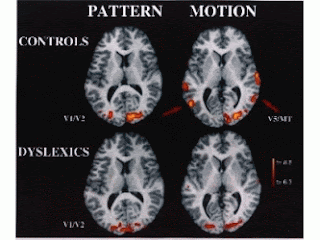A new study finds that some kids with ADHD have diminished symptoms when they eliminate certain foods from their diets. 
According to a study published in the February 5, 2011 issue of The Lancet, eliminating processed foods from the diets of children aged 4-8 with ADHD reduced symptoms in 78% of them. When those foods were reintroduced, two-thirds of the children relapsed.

- mmmm donut ...
"A strictly supervised restricted elimination diet is a valuable instrument to assess whether ADHD is induced by food. We think that dietary intervention should be considered in all children with ADHD, provided parents are willing to follow a diagnostic restricted elimination diet for a five-week period, and provided expert supervision is available," concluded the authors of this study.
Sugary Foods
For a very long time, parents have felt that foods high in sugar may cause symptoms of hyperactivity, but the National Institute of Mental Health (NIMH) insisted that the evidence didn’t exist to support this theory. On the other hand, the evidence has been mounting that specific food additives may cause behavioral symptoms in children.
The researchers decided to test children to see if certain foods caused symptoms of hyperactivity. They studied 100 children from the Netherlands and Belgium. All of the children were aged 4-8 and had been diagnosed with attention deficit hyperactivity disorder (ADHD). The majority of the study subjects were boys.

- Candy
The children were chosen at random to participate in one of two groups. One group was started on a restrictive elimination diet, while the second group acted as a control group and received advice only on healthful eating habits.
Those in the first group started out on the “few foods diet,” which includes only water, pears, vegetables, meat, and rice. The researchers made gradual additions to this diet, with wheat, fruit, and potatoes. The children remained on restrictive diets for 5 weeks.
Food Challenges
The kids in this same group then received two food challenges over the following four weeks, during which specific foods were introduced into the diets of these children. Foods were chosen in both low and high IgG food groups.
IgG is an antibody that is created by the immune system. Some practitioners of alternative medicine believe that IgG causes food sensitivities. However, this remains a controversial theory, not accepted by mainstream medical science.

- Hamburgers and Fries
Of the 41 children who completed the restrictive diet phase, 78% were found to have reduced symptoms of ADHD in comparison with their controls, who showed no improvement. Nine children on the restrictive diet or 22% showed no change in symptoms. The scientists used an ADHD symptom scale that ranges from 0-72 points. A higher score represents more severe symptoms. The average reduction of symptoms in the children on the restrictive diet was by 24 points.
Thirty of the children who responded well to the restrictive diet were given the challenge test. Of those children, 19 relapsed in their symptoms. There was no difference between the children who received the low versus the high-IgG foods.
The upshot is that measuring IgG levels in children probably isn’t helpful but an elimination diet may reduce hyperactive symptoms in the child with ADHD. If you see your child with ADHD getting worse when he eats certain foods, by all means, take them out of his diet and see if it helps his symptoms.
Related articles
- Dr. Joseph Mercola: What's in Fast Food? What's in the Non-Chicken Half of the McNugget (huffingtonpost.com)
- Dietary Guidelines Call for Eating Less (online.wsj.com)
- Letters: ADHD diet success (guardian.co.uk)




























 , describing the way commercial entities have co-opted ADHD for themselves, spotting a serious business niche by way of parents who will buy just about anything in their desperation to make their children’s ADHD go away.
, describing the way commercial entities have co-opted ADHD for themselves, spotting a serious business niche by way of parents who will buy just about anything in their desperation to make their children’s ADHD go away.
